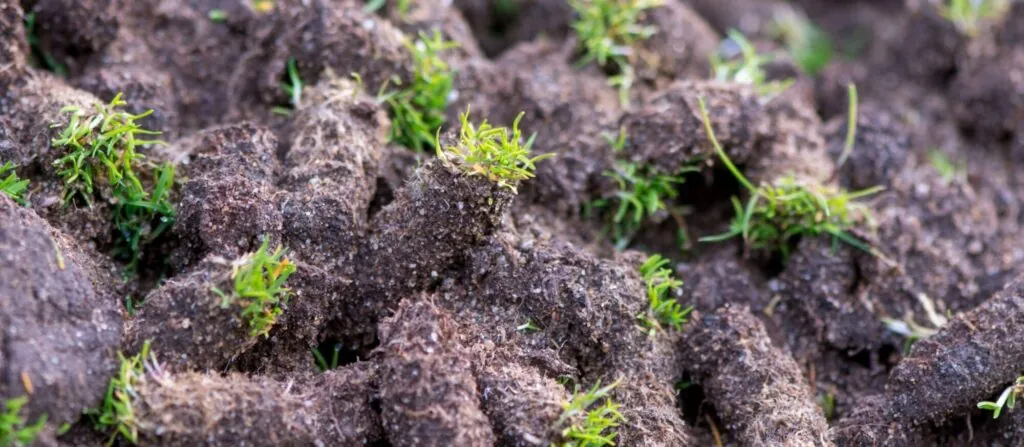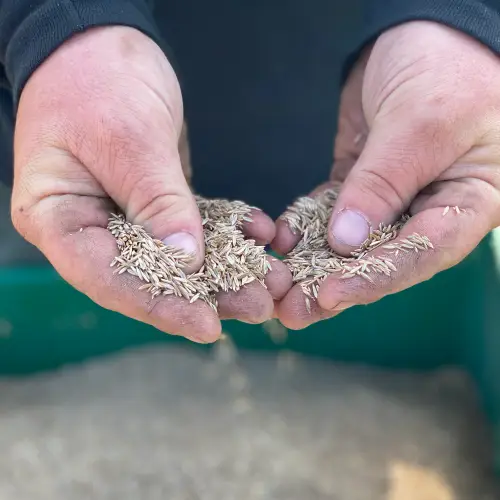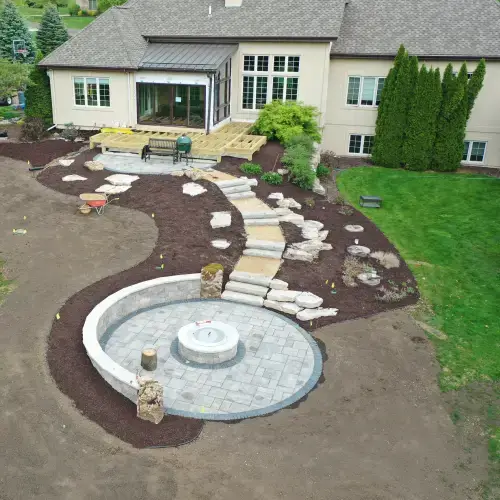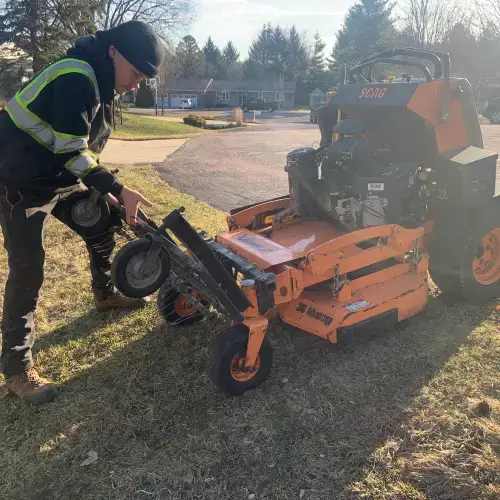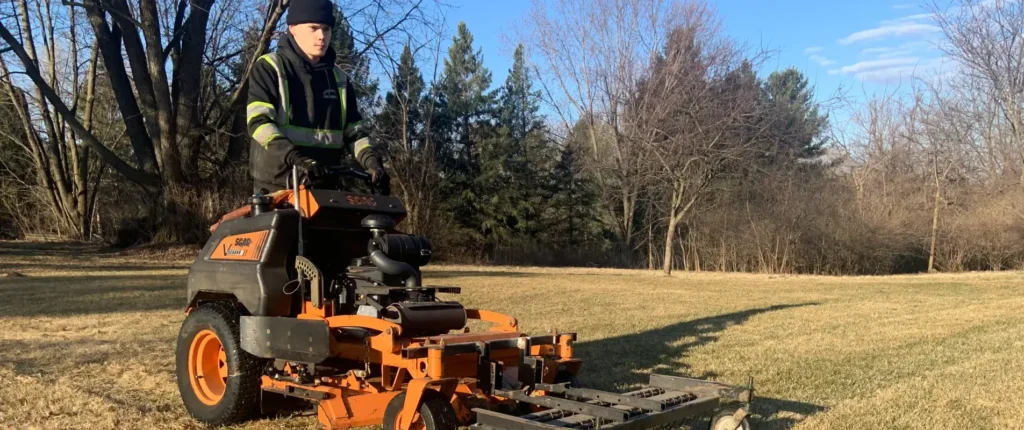
What Are the Lawn Care Basics Every Wisconsin Homeowner Should Know?
A healthy lawn starts with five essentials: mowing, watering, fertilizing, aeration, and seasonal upkeep. Following these steps keeps Wisconsin lawns lush, green, and resilient year-round.
Your Guide to a Healthy, Green Lawn
A healthy lawn doesn’t happen overnight—it’s the result of consistent, thoughtful care. The good news? With the right techniques, any homeowner can transform their yard into the lush green space neighbors admire. From mowing and fertilization to aeration and seasonal tasks, understanding the fundamentals is the key.
This guide walks you through the lawn care basics step by step, with answers to the most common questions Wisconsin homeowners ask. Follow these tips, or let Carrington Lawn & Landscape take the guesswork out of the process so you can enjoy a thriving lawn without the extra work.
How Often Should I Mow?
Mowing is the foundation of lawn care. Cutting your grass at the right height keeps it healthy, discourages weeds, and builds resilience against stress.
- Height: Aim for 2.5–3.5 inches, depending on your grass variety. Cool-season grasses like Kentucky bluegrass and fescue benefit from staying on the taller side.
- Frequency: Plan for once a week during peak growing seasons (spring and fall), and every 7–10 days in slower summer months.
- Blade Care: Sharpen mower blades at least twice per season. Dull blades tear grass, leaving brown tips that make lawns look unhealthy. (Our crews sharpen our mowing blades every day.)
Once mowing is under control, the next step is ensuring your lawn has the nutrients it needs to thrive.
What’s the Best Fertilization Schedule for Wisconsin?
Think of fertilizer as fuel for your lawn. Without it, grass struggles to stay thick and green. Timing your applications with Wisconsin’s seasons maximizes results:
- Spring: Apply a slow-release fertilizer to wake up dormant grass.
- Summer: Use a lighter feeding to sustain color through heat stress.
- Fall: Prioritize root strength with fertilizer rich in potassium and phosphorus to prepare grass for winter.
Always water after fertilizing to help nutrients absorb into the soil and reduce the chance of burning. A strong fertilization schedule creates a dense lawn, which is your best defense against weeds.
How Do I Manage Weeds and Pests Naturally?
Weeds like crabgrass and dandelions are frustrating, but they don’t have to take over. The healthiest lawns naturally crowd them out.
- Prevention First: Thick, well-fed grass shades weed seedlings before they sprout.
- Mowing Matters: Regular mowing prevents weeds from producing seed heads.
- Natural Pest Resistance: Strong root systems from deep watering discourage pests like chinch bugs, which thrive in stressed lawns.
Combining fertilization, mowing, and smart watering will reduce reliance on chemicals and give your grass the upper hand.
What’s the Right Way to Water My Lawn?
Watering can make or break lawn health. Shallow, frequent watering encourages weak roots, while deep soakings train grass to be more resilient.
- Established Lawns: Provide about one inch of water once per week.
- Newly Seeded Lawns: Mist lightly twice a day for 5–10 minutes to keep seeds damp without runoff. Once grass reaches half an inch, switch to once daily for 15–20 minutes.
- Soil Type: Sandy soils dry quickly and may need more frequent watering, while clay soils retain water longer.
Morning is the best time to water—cooler air and low sun mean less evaporation and lower risk of fungal issues.
Why Are Aeration and Overseeding Important?
Over time, soil compacts, making it harder for roots to access air, water, and nutrients. Aeration removes plugs of soil, loosens the compaction, and creates channels for air circulation.
When paired with overseeding, aeration does double duty: it relieves stressed soil and helps new grass varieties take root in bare patches. In Wisconsin, fall is the prime season for these tasks because cooler temperatures reduce stress on seedlings. This guide from the University of Wisconsin Extension explains why autumn is the ideal time to overseed and strengthen your turf.
Together, aeration and overseeding give your lawn a powerful boost heading into seasonal transitions.
What Seasonal Lawn Care Tasks Should I Plan For?
Caring for your lawn year-round ensures long-lasting results:
- Spring: Rake away debris, prepare soil for drainage, apply pre-emergent weed control, and fertilize.
- Summer: Mow high, water deeply, and monitor for pests.
- Fall: Aerate, overseed, fertilize, and improve soil with compost if needed.
- Winter: Limit foot traffic, keep heavy snow piles off the grass, and plan for spring prep.
This cycle keeps your lawn consistently healthy rather than constantly playing catch-up.
Pro Tips from the Experts
- Sharpen mower blades every 20–25 hours of use.
- Mix loam, sand, and topsoil to enrich the soil before seeding.
- Test your soil every 2–3 years for nutrient balance.
- Consider sod for instant results, or hydroseeding for even distribution over large areas.
- Choose grass blends tailored to both your climate and soil type.
FAQs About Lawn Care in Wisconsin
Q: Can I fertilize my lawn in the summer heat?
A: Yes, but go light. Use a slow-release fertilizer in midsummer to maintain color without stressing the grass. Always water right after to prevent burning, and avoid fertilizing during extreme heat waves.
Q: What grass types grow best in Wisconsin?
A: Cool-season grasses thrive in Wisconsin and go dormant in the summer heat. Warm-season grasses do the opposite, going dormant during the cold months. Many lawns use a blend of both to stay green longer through the seasons. The top choices are Kentucky bluegrass, fine fescue, and perennial ryegrass. These varieties handle Wisconsin’s cold winters and bounce back quickly in spring.
Q: How do I know if my lawn needs aeration?
A: Signs your lawn needs aeration include:
- Puddles after rain (poor drainage)
- Thin or bare patches despite fertilization
- Soil that feels hard or compacted underfoot
- Heavy foot traffic areas where grass struggles to grow
If you notice these, aeration in the fall will help roots access water and nutrients.
Ready for Professional Help?
Lawn care requires time, consistency, and expertise—and it can be overwhelming to manage every detail alone. That’s where our team at Carrington Lawn & Landscape comes in. From mowing and fertilization to overseeding and seasonal maintenance, our team provides professional programs designed to keep your lawn healthy, green, and worry-free.
Contact Carrington Lawn & Landscape today to schedule your lawn care service—and enjoy the beautiful lawn your family (and your feet) will love year-round. Serving Madison and surrounding areas since 1998!

